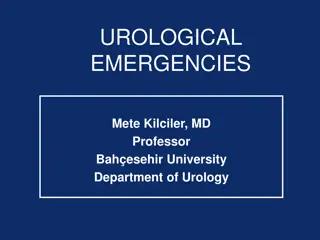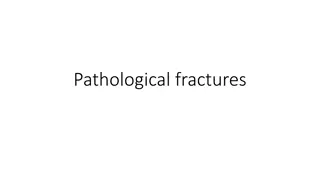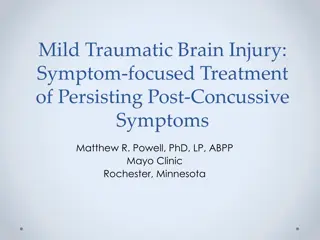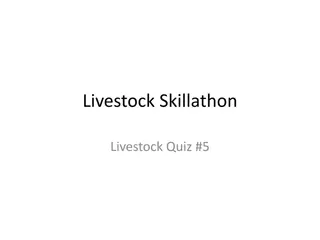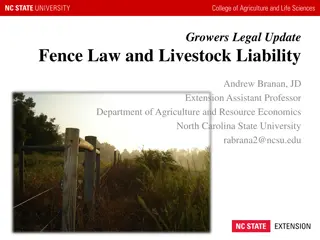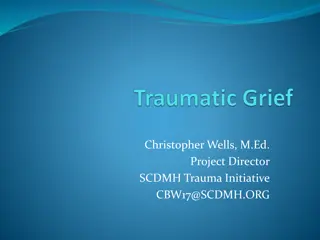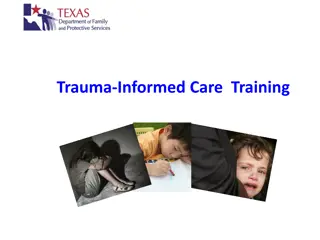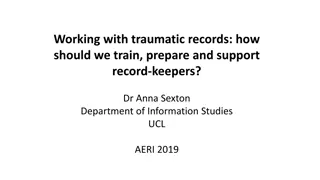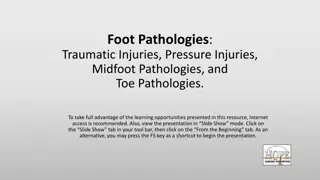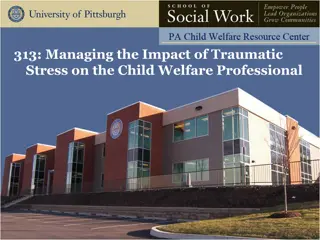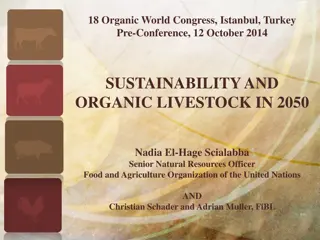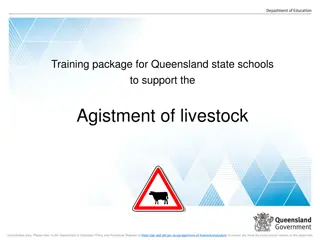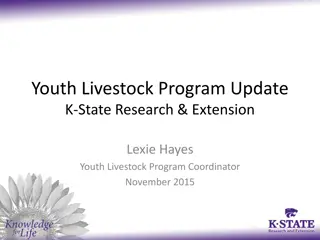Traumatic Reticulopericarditis in Livestock: Causes, Symptoms, and Management
Traumatic reticulopericarditis in livestock is caused by penetration of the pericardial sac by a migrating metal foreign body, leading to pericarditis, toxemia, and congestive heart failure. Clinical signs include depression, anorexia, respiratory distress, and bilateral jugular distension. If chronic, it can restrict heart action. Rare complications include laceration of coronary artery or ventricular wall rupture. Death can result from acute heart failure. Proper diagnosis and management are crucial for the welfare of the affected animals.
Download Presentation

Please find below an Image/Link to download the presentation.
The content on the website is provided AS IS for your information and personal use only. It may not be sold, licensed, or shared on other websites without obtaining consent from the author. Download presentation by click this link. If you encounter any issues during the download, it is possible that the publisher has removed the file from their server.
E N D
Presentation Transcript
TRAUMATIC RETICULOPERICARDITIS BY DR. HUSSEIN ALNAJI
Perforation of the pericardial sac by a sharp foreign body originating in the reticulum causes pericarditis with the development of toxemia and congestive heart failure. ETIOLOGY Traumatic pericarditis is caused by penetration of the pericardial sac by a migrating metal foreign body from the reticulum. The incidence is greater during the last 3 months of pregnancy and at parturition than at other times.
Pathogenesis animal may have had a history of traumatic reticuloperitonitis during late pregnancy or at parturition. Physical of infection through pericardium from a traumatic mediastinitis. penetration sac penetrates foreign body remains in a sinus in the reticular wall after perforation penetrates the pericardial sac at a later date. the and the initial and the
Inflammation is marked by hyperemia of the pericardial surfaces and the production of friction sounds synchronous with the heart beats. Clinical signs produced by two way . the pressure on the heart from the fluid that accumulates in the sac and produces congestive failure. the toxemia caused the infection. by heart
Note I: If chronic pericarditis persists, there is restriction of the heart action caused by adhesion of the pericardium to the heart. Note II: uncommon sequel a after perforation of the pericardial sac by a foreign body is laceration of a coronary artery by the wire or rarelyrupture of the ventricular wall. Death usually occurs suddenly caused by acute, congestive heart failure from compression of the heart by the hemopericardium
Clinical signs 1. Depression, anorexia, habitual recumbency, and rapid weight loss are common. 2. Diarrhea or scant feces may be present and grinding of the teeth, salivation, and nasal discharge are occasionally observed. 3. The animal stands with the back arched and the elbows abducted. 4. Respiratory movements are more obvious, and are mainly abdominal and shallow with an increase in rate to 40 to 50 beats/min and often accompanied by grunting. 5. Bilateral distension of the jugular veins and edema of the brisket and ventral abdominal wall are common. 6. A prominent jugular venous pulse is usually visible and extends proximally up the neck.
7- Pyrexia (40C41C) is common in the early stages, and an increase in the heart rate to 100 beats/min and a diminution in the pulse amplitude are constant. 8- Pinching of the withers to depress the back or deep palpation of the ventral abdominal wall behind the xiphoid sternum commonly elicits a marked painful grunt. 9- A grunt and an increased area of cardiac dullness can also be detected by percussion over the precordial area, preferably with a pleximeter and hammer. 10- Heart sound accompanied by a pericardial friction rub, which may wax and wane with respiratory movements. Care must be taken to differentiate this from a pleural friction rub caused by inflammation of the mediastinum. In this case the rub is much louder and the heart rate will not be so high.
11- Later the heart sounds are muffled and there may be gurgling, splashing, or tinkling sounds. 12- In terminal stages are gross edema, dyspnea, severe watery diarrhea, depression, recumbency, and complete anorexia. 13- Enlargement of the liver may be detectable by palpation behind the upper part of the right costal arch in the cranial part of the right paralumbar fossa. Death is usually caused by asphyxia and toxemia
Clinical pathology A.Hemogram 1. leukocytosis accompanied by a neutrophilia and eosinopenia 2. Hyperfibrinogenemia marked increases in serum total protein concentration. A.Pericardiocentesis When gross effusion is present the pericardial fluid may be sampled by centesis with a 10-cm 18-gauge needle the flud has foulsmelling (similar to a severe metritis in cattle caused by a retained placenta) andturbid, which is diagnostic for pericarditis.
NECROPSY FINDINGS In acute cases there is gross distension of the pericardial sac with foul-smelling, grayish fluid containing flakes of fibrin, and theserous surface of the sac is covered by heavy deposits of newly formed fibrin. A cordlike, fibrous sinus tract usually connects the reticulum with the pericardium. Additional lesions of pleurisy and pneumonia are commonly present. In chronic cases the pericardial sac is grossly thickened and fused to the pericardium by strong fibrous adhesions surrounding loculi of varying size, which contain pus or thin straw-colored fluid.
DIFFERENTIAL DIAGNOSIS 1. Endocarditis. 2. Lymphosarcoma. 3. Congenital cardiac defects. 4. Less common causes of abnormal heart sounds include thoracic tumors and abscesses, thymic lymphosarcoma, diaphragmatic hernia, and chronic bloat,. 5. In severely debilitated animals or those suffering from severe anemia a hemic murmur that fluctuates with respiration may be audible.
Treatment 1. Prognosis poor and euthanasia commonly recommended 2. Chronic effective pericardial drainage and lavage via an indwelling flexible pericardial catheter. 3. Systemic antimicrobials such as procaine penicillin or oxytetracycline. 4. Rumenotomy to remove metallic foreign body if portion of wire still in reticulum. 5. Left fifth rib resection and pericardial marsupialization in advanced cases that are unresponsive to pericardial lavage Control (See control of traumatic reticuloperitonitis)


